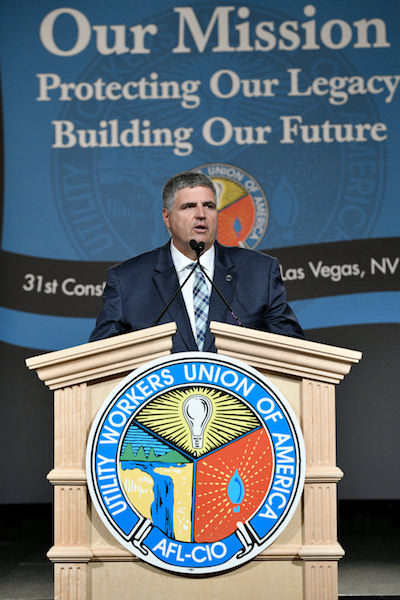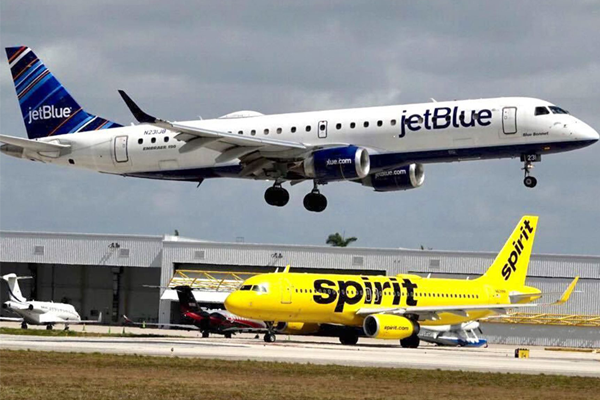New York, NY – Con Edison workers could walk off the job on June 20, now that members of the Utility Workers Union of America [UWUA] Local 1-2 have authorized a strike against the utility giant.
LaborPress recently sat down with UWUA President James Slevin to find out more about the challenges facing the union, all those who have continued working throughout the pandemic, and what the future might hold.
The UWUA represents more than 50,000 workers in eight fields: Electric, Gas, Water, Nuclear, Call Center, Professional Technical (such as engineering, specialized clerical and accounting, that all pertain to utility) Public Sector, and Renewable Energy. Their reach extends to five regions across the country, from California to New York, with the North East, Region 1, being the biggest, and different states in between.

LP: How have closures of different regions affected the members and how are reopenings taking place?
JS: Utility has been impacted, but all fields are classified as essential workers so all have been working. All office workers, such as call centers and engineering shifted to working from home. We will still be doing that for a while. A lot of areas are still capacity issues, so we can’t bring our workers back into those areas.
LP: Have any jobs been lost permanently due to the coronavirus crisis?
JS: No, we’ve had no areas of loss. There were some very small lay-offs in the West Coast area, but they only lasted a very short time; they were permit issues. The work will still be there, it only has to be done with a different approach.
LP: How many cases of COVID-19 were there among union members? How many deaths?
JS: We don’t know the total number, but almost 10% of our locals said 5% of their members [had been sick]. There were 13 fatalities, with New York first, then Detroit. But safety has always been our priority. We had safety committees even before COVID-19. We’ve approached it in a pro-active way. We’ve been making companies do great practices with social distancing and PPE [Personal Protective Equipment]. I think if we hadn’t had these practices the numbers might have been different.
LP: What are some major challenges facing the union and its members at this time?
JS: There are shortages in the utility field. A tremendous amount of shortages in staffing levels. Utilities just have minimal staffing; they’ve had to rely on mutual aid. For example, it’s hurricane season. [This presents problems such as] there is still a quarantine period if New York workers go to Florida to work. Do we allow them to go? In Florida and Texas there’s an uptick in the virus – do we allow New Yorkers to go there? And can utilities spare workers when they leave their own areas?
There is also an aging work force – that needs to be examined. We see what the COVID-19 crisis has caused among the aging population. Working in this heat and with face masks may cause some to say they’ll take early retirement.
LP: How is the union communicating with its workers?
JS: We’ve developed Incident Command Structure (ICS). It filters information up and down so it doesn’t get bottlenecked and lost. It’s recorded, passed on, there’s a dialogue. It filters the most important information. For example, an incident in one area, like California, we can communicate to other regions. And as we start to see some states reopening up before other states, we can share that information as to how that’s worked out. We make sure everybody is getting the same message, and that it’s a clear message.
LP: What do you see for the future of the union?
JS: Con Edison, our largest employer’s contract is coming up on June 20th. There are issues such as COVID-19 and inequality. What do we do? They are negotiating. These are challenges labor will have to face. For the COVID-19 crisis, there are questions such as, how long will working from home go on? What will sick pay policies be? Vacation time – can they still take a vacation, such as mental health time. What about health insurance costs? Will we see more pulmonary issues? If we end up in a labor dispute, how do we social distance at the picket lines? We have to get the workers the dignity and respect they deserve through collective bargaining.
Members of UWUA Local 1-2 gave their strike authorization on June 1st, overwhelmingly approving the strike if needed. Local 1-2 President James Shillitto made the announcement. Despite the COVID-19 pandemic, the contract is set to expire on June 20.
Shillitto said that the Local had been in “earnest contract talks” for some weeks at the Training Center in Queens and is looking to avoid a labor action. Adding, however, that a strike “is the strongest weapon we have.”
“Remember that they locked us out in 2012 and brought us to the brink in 2016 in an effort to break us,” Shillitto said, “We look for the same to happen this year as the bosses are pleading poverty while reaping record profits. After the sacrifices which our members have made, particularly working during the pandemic, risking themselves and their families, they deserve their fair share.”
Shillitto still wants Members to work in a safe manner and observe all COVID-19 safety protocols.
“Con Ed knows without the brothers and sisters of Local 1-2, many putting their lives on the line every day, it cannot keep the system up and running as crisis after crisis affects our region,” Shillitto said.
John Melia, a spokesman for Local 1-2, said, “Con Ed is offering nothing but regressive policies. The purpose of a contract is to improve conditions for its workers. Con Ed likes to play hardball, we have been there before with them. They do have shareholders. [But] we know the utility is understaffed, we know the grid is under strain, because it has not been maintained, nor upgraded. Now, because of the pandemic, everyone is working from home. It will just be hotter and humid and muggy coming up and demand is increased. Eight years ago Con Ed locked out the employees – it was brought to an end by Governor Cuomo, in 2016 they went past the deadline. They may push it past the deadline this time as well. There will be problems [with the utility]. We see it every day on the streets, always something malfunctioning that needs to be repaired.”



